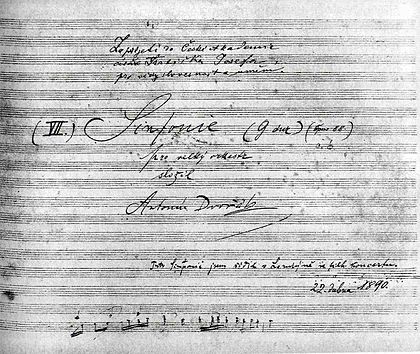This symphony was composed by Dvorak in a short span of several months in 1889. A sunny, cheerful work, it alternates major and minor keys in each of its four movements.
Dvorak wrote this work in a new style, transitioning from traditional symphonic structure (exposition-development-recapitulation) towards a more poetic musical structure, stitching together many melodic and thematic fragments (particularly evident in the first movement).
The symphony opens with a wistful theme in G minor by ‘celli, clarinets, bassoon and horn. The violins lead an energetic transition to G Major; a clarinet theme in minor keys is interspersed several times in the movement, which ends on an optimistic note.
The second movement is more introspective. Beginning softly in the strings, upper winds join in to combine in a duet. Singing passages in C Major, first in the winds and then in the strings, lead to rousing climaxes featuring brass and timpani.
The third movement is a graceful waltz, bracketed by a folk-melody trio and a sudden vivace at the end. A rousing trumpet flourish starts off the last movement. A series of string variations feature ‘celli and violas, abruptly followed by a rousing orchestral Allegro. Midway through the movement, Dvorak gives the winds a contrasting restless theme in C minor. The “theme and variations” return in the strings and woodwinds; the main Allegro theme then reappears. Led by surging horns, trumpets and trombones, the symphony accelerates to a triumphant close.
Symphony No. 8 in G Major
Op. 88
Composed in 1889
By Antonin Dvorak






